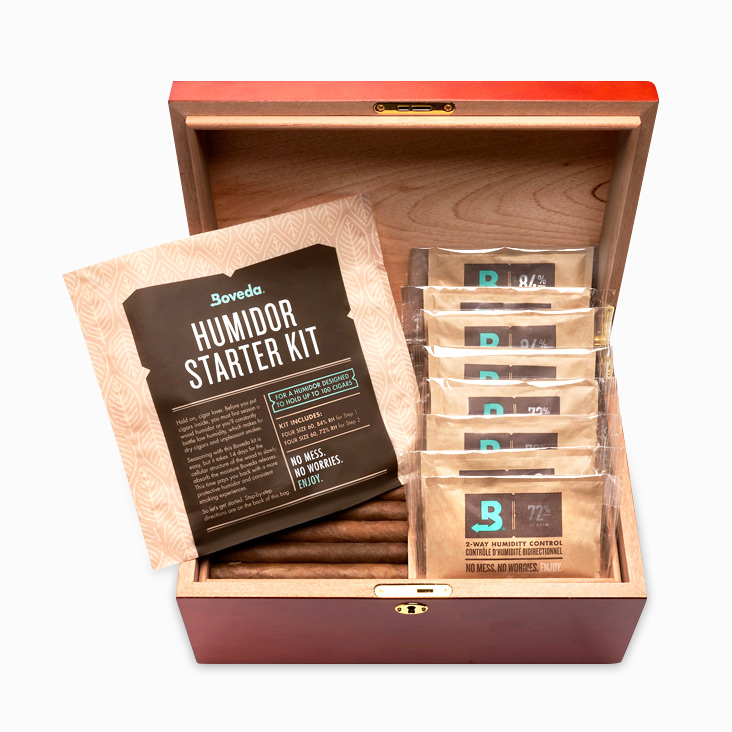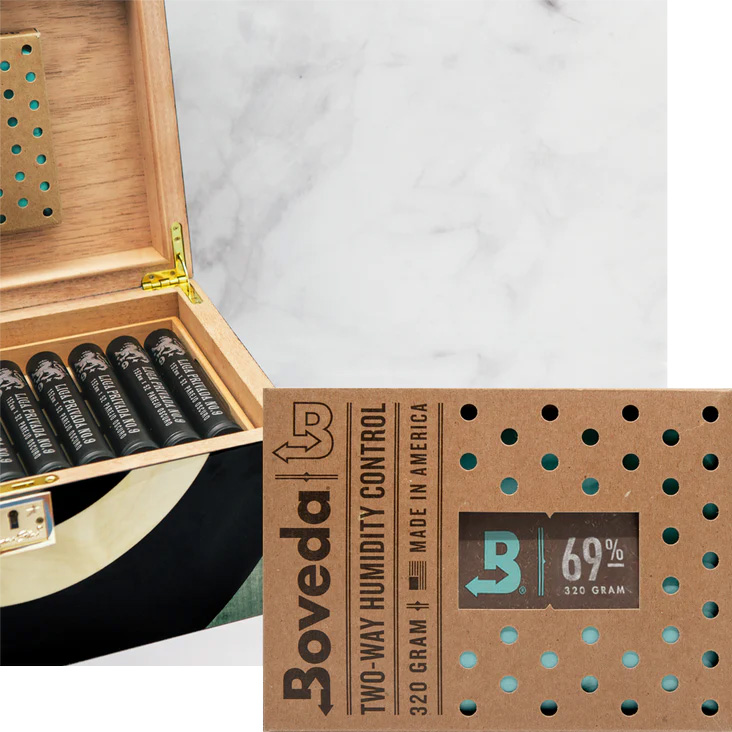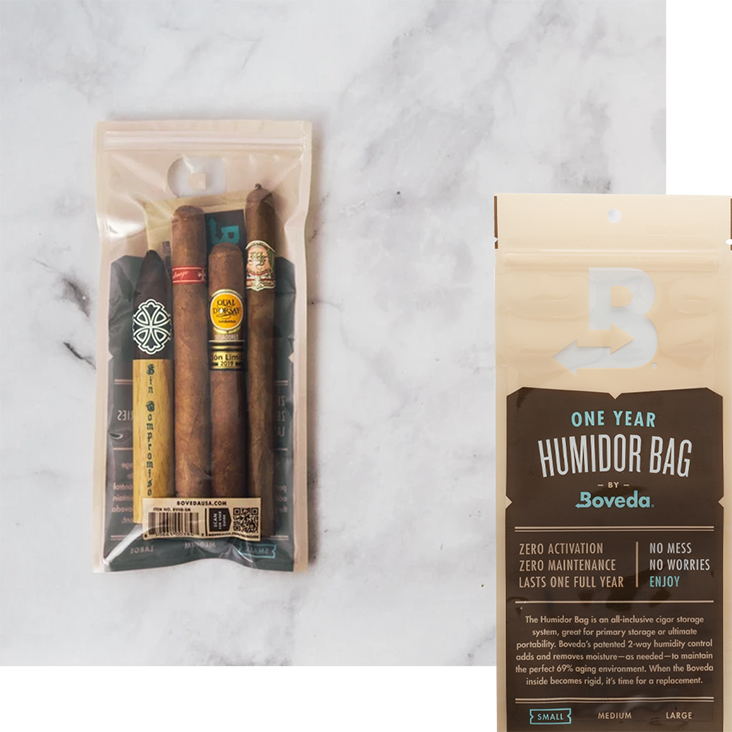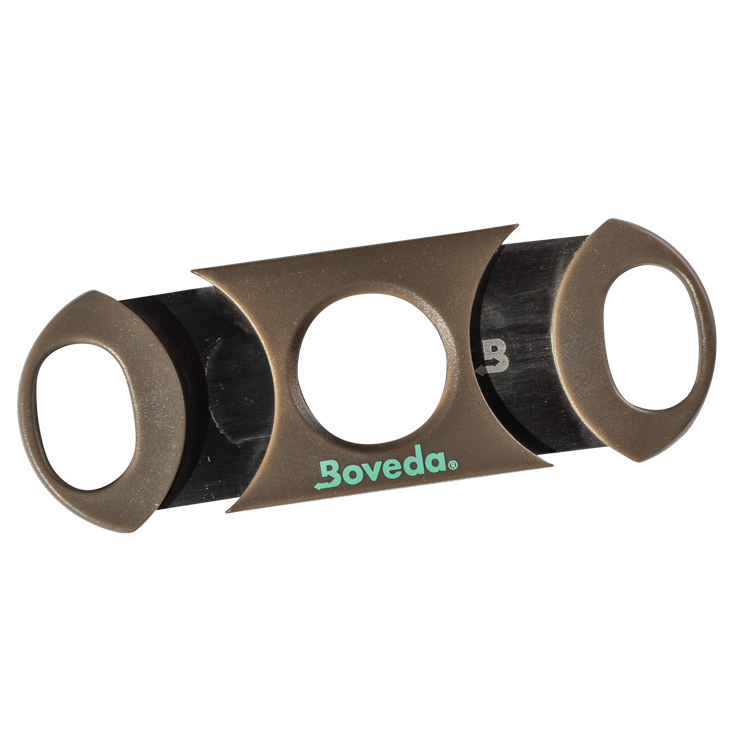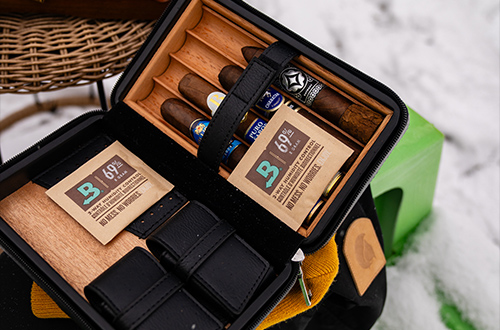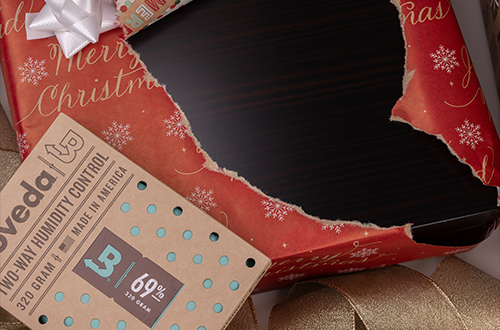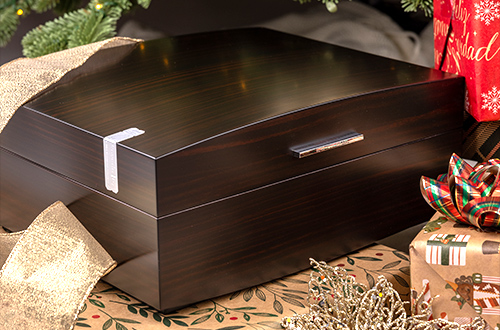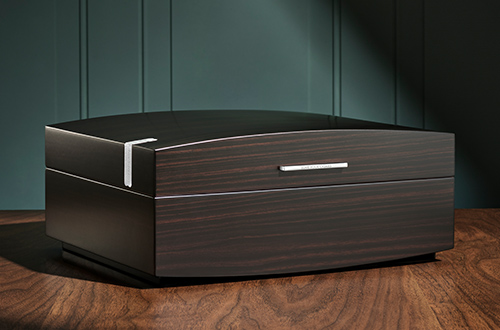Saunter into a tobacconist’s humidor, and you’ll see a plethora of cigar choices. Are you usually drawn to a Gordo, but find yourself tempted by a Lancero? (Where have you been all my life, you lithe, skinny thing?) Or perhaps you’re new to smoking and find the sheer number of cigars overwhelming. Whether you’re pairing up with your first stick or entertaining a dalliance with an untried vitola, it’s wise to know what you’re in for when you’re shopping for cigars.
Something to Noodle Over When Shopping for Cigars
Think of cigars like pasta. You can order different shapes and sizes—from farfalle and penne to linguine and orecchiette. Each type of pasta cooks up differently, interacts with sauce differently, and produces a different sensory experience. That’s roughly what you can expect from cigars. Their shapes and sizes aren’t merely for looks; they impact a cigar’s taste, burn time, draw, and temperature. In this article, explore a comprehensive guide to the different types of cigars.
Cigar Shapes
Broadly speaking, from the lowest tiers to the most expensive cigars, the most popular cigar shapes fall into two basic categories: Figurados and Parejos.
Parejos
Parejos (from the Spanish for “equal”) are a familiar cigar shape: cylindrical shape (once you cut the cap) with a uniform width (AKA ring gauge), and flat foot. Many of the most popular cigar types like Churchills, Coronas, and Robustos are Parejos.
However, there are variations to the Parejo cigar shape. Most notably, box-pressed cigars fall under the Paraejo umbrella. Instead of being perfectly cylindrical, these cigars—as the name suggests—are tightly packed in their box using a hand-cranked press, giving them straight, squared edges.
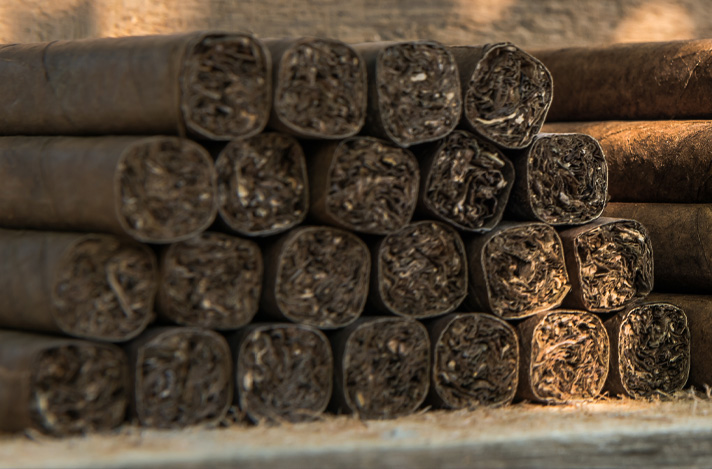
Figurados
An easy way to define a Figurado might be, “Any cigar that isn’t a Parejo.” Basically, Figurados (Spanish for a “figured” shape) are non-uniform cigars that may feature inconsistent ring gauges, closed heads, braids, and various other unconventional characteristics.
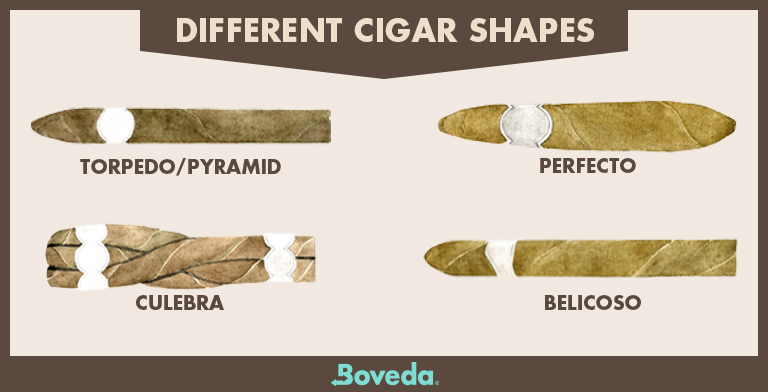
Cigars in this style include:
- Pyramids/Torpedos: A (you guessed it) pyramid-shaped cigar with a sharply tapered, pointed head and a wide, open foot
- Belicosos: Shorter pyramid-shaped cigars with pointed tips
- Culebras: A trio of intertwined cigars, traditionally braided together and smoked separately
- Perfectos: Double-tapered cigars with both ends rounded, featuring a narrower head and an overall unique shape
Try not to be intimidated by oddly shaped cigars. Sampling differently shaped cigars helps you define your likes and dislikes, which adds to your smoking repertoire. They each offer unique and rewarding smoking experiences.

Cigar Sizes
Any of the cigar shapes listed above can come in various sizes. For example, a Parejo can vary from long and thin, which is called a Lancero to short and fat, which is called a Robusto.
The two basic concepts you need to know regarding cigar shapes are length and ring gauge (width).
Length
Cigar length refers to the measurement from the foot (the end you light) to the head (the end you smoke). It’s typically labeled in inches, though you can find some places that use the metric system.
The length of a cigar significantly influences your smoking experience. Longer cigars take longer to smoke. Often that extra length allows a cigar’s flavors to develop gradually, which provide a more complex, layered experience. Conversely, shorter cigars deliver a quicker, more intense burst of flavor—ideal if you like a bold cigar and/or have less time to smoke it.
Ring Gauge
Ring gauge refers to the diameter or thickness of the cigar. It’s measured in 64ths of an inch (a 32 ring gauge = ½ inch, a 48 is ¾ inch, etc.)
Ring gauge is critical in determining a cigar’s overall smoking experience. A thicker ring gauge generally means you’re in for a slower burn; it allows for a cooler, more leisurely smoke with a richer blend of flavors, as it can accommodate more filler tobacco. Read Boveda’s resource on lighting big cigars to ensure a healthy ember on your thick cigar.
On the other hand, a thinner ring gauge tends to burn faster and hotter, delivering a more intense and direct flavor profile.
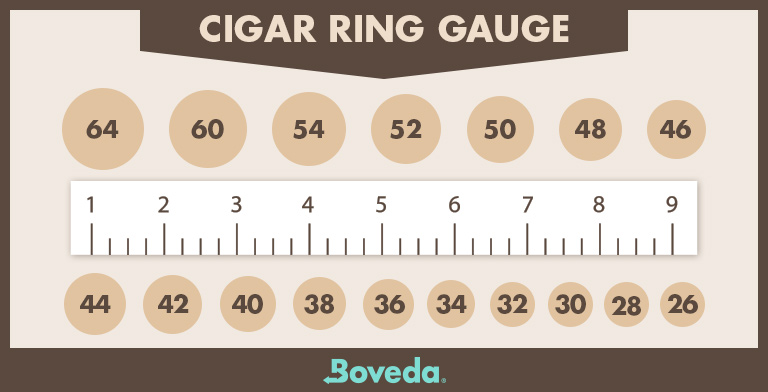
Popular Vitolas
When you put length, ring gauge, and shape together, you get a vitola: Basically, a name that tells you (roughly) the shape and size of the cigar you’re going to smoke. Each vitola offers a slightly different smoking experience since—as we mentioned above—shape and size affect the draw, burn time, and flavor of the tobacco.
Vitola names are usually standardized across brands, and you’d probably be surprised, even as a novice smoker, to realize how many names you already know.
Some common vitolas include:
- Petit Corona: 4.5 to 5 inches with a 42 ring gauge
- Gordito: 4.5 inches with a 60 ring gauge
- Robusto: 4.8 to 5 inches with a ring gauge between 48 to 56
- Gordo: 6 to 7 inches with a 60 ring gauge
- Panatela: 6 inches with a 34 ring gauge
- Toro: 6 to 6.5 inches with a ring gauge between 50 and 54
- Churchill: 6.5 to 7 inches with a ring gauge between 47 and 50
- Double Corona: 6.75 to 8.5 inches with a roughly 50 ring gauge
- Lancero: 7.5 inches with 38 ring gauge
- Gran Corona: A whopping 9.5 inches with a 47 ring gauge
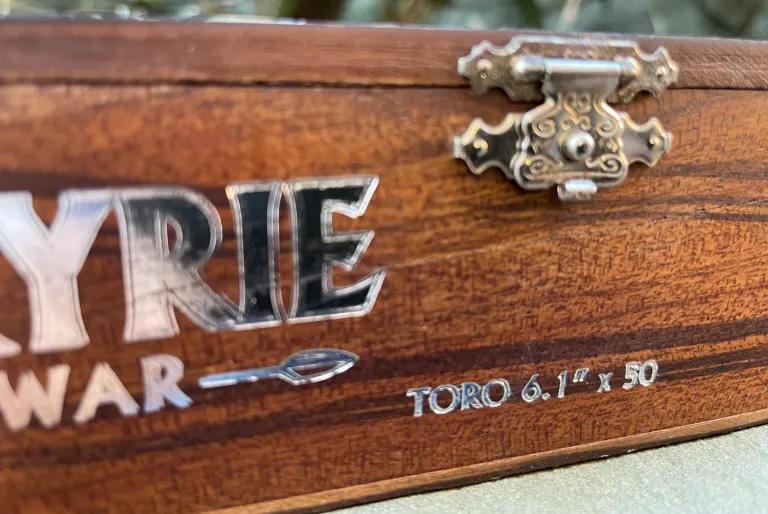
How A Cigar’s Size and Shape Affect Your Smoking Experience
As mentioned, size can greatly impact the smoking experience. If you want a slow burn, focused more on the wrapper flavor, choose a long and thin cigar. If you’re looking for a rich, intense and fast smoking experience, reach for a short and thick vitola. If you want to make your cigars last with a slowly intensifying, deeply rich smoke, opt for a long and fat cigar. If you just need a quick, wrapper-centric smoke, choose a short, thin vitola. And if you want a novel experience, turn to any of the various sizes above in a Figurado shape. There are no wrong answers in the world of cigars. Just choose one that suits your tastes and available time.
Whatever shape or size you choose, remember to store your sticks properly. Shop for the best humidors for cigars you can afford. Before you add in cigars, protect your investment with a Boveda Starter Kit, which preps your humidor for cigars and maintains the right humidity for months afterward.






